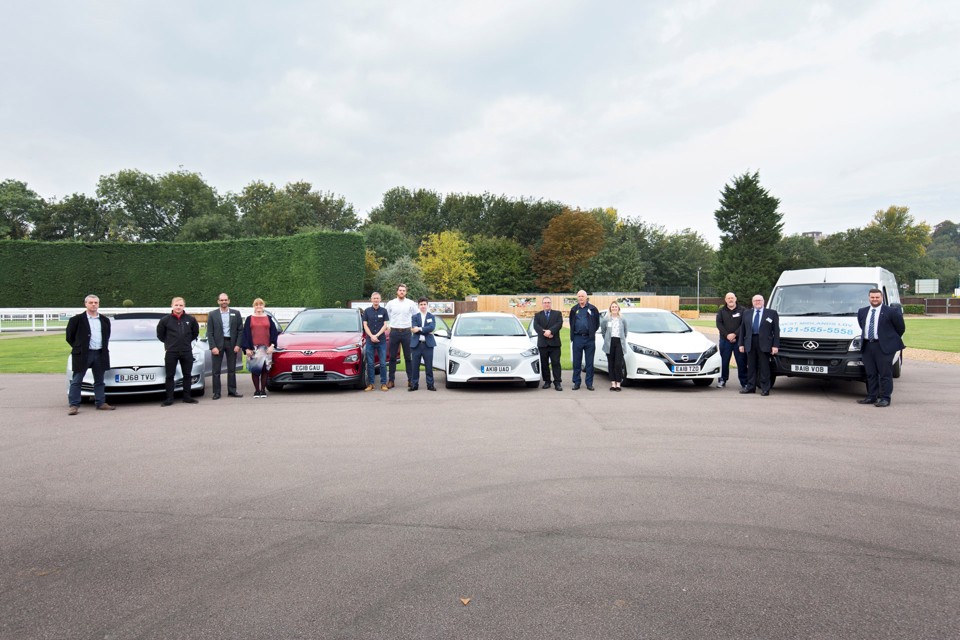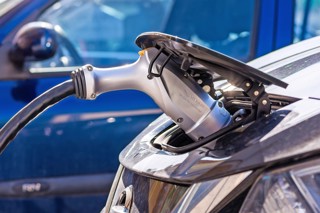This feature originally appeared in the May 28, 2020 edition of Fleet News. Read the digital issue of the magazine
Organisations wary of adding electric vehicles to their fleets often change their attitudes when they experience the technology for themselves, says the programme manager of a pioneering project.
The two-year ULEV Experience – a business and public sector support programme dedicated to helping Nottingham-based organisations understand, trial and implement battery electric vehicles (BEVs) – offered a range of events, vehicle loans and fleet reviews ahead of its conclusion in March.
“We came across a number of businesses that were dead against (electric vehicles – EVs) – they just didn’t see the point of electric,” says Rob Anderson, programme manager for ULEV Experience and senior fleet specialist at Cenex.
“But we found that if you could persuade those who were interested – even if they were a little bit sceptical – to get into an electric car and try it for two weeks, then their attitude changes and they see the benefits.
“Going in full bore and replacing everything with EVs is probably going to end up in a bit of a disaster, let’s be honest.
“But get some in, get drivers involved. Help them understand what it means for them as either a company car driver or, if you’re looking at vans, get your drivers into them and help them understand what it means to them as an individual.
“Everyone needs to understand what EVs involve before you can really make wholesale changes.”
The ULEV Experience was supported by Nottingham City Council’s Go Ultra Low City funding and delivered through the Workplace Travel Service and a consortium led by Cenex, with partners from DriveElectric, Energy Saving Trust, RideWise, CleanTech Business and Automotive Comms.
The programme, which also delivered £600,000 of workplace travel grants to support 60 organisations to install both EV charging points and active travel infrastructure, focused on three areas: business engagement and events, ULEV loans and fleet reviews.
Business engagement
Over the two-year period, CleanTech Business and RideWise delivered 23 events which were attended by a total of 619 delegates.
These included:
- Clinics, where specific topics such as EV finance, battery technology and installing charging infrastructure at workplaces were covered in a workshop environment.
- Ride-and-drive events where attendees could learn about the benefits of EVs and take test drives.
- Roadshows, where business park tenants were invited to learn more about the technology and test drive an EV where appropriate.
- An evening business networking reception, where organisations who were interested in using low emission vehicles could listen to an ‘EV Question Time’ panel discussion and network with organisations that had begun to transition their fleets towards electric vehicles.
“We found very quickly that yes, the same people were turning up to different events and that was because they were getting more interested in what’s going on and were able to ask more insightful questions,” says Anderson.
“The first few events were about people’s concerns about the vehicles not having sufficient range or not being available, and then we moved on to the more business-led and deployment-led questions of what the benefit-in-kind (BIK) tax means for the drivers, and what to do about charging.”
The events also created a pipeline of businesses who then progressed to a ULEV loan or a fleet review.
ULEV loans
As extended ULEV loan trials were not available through dealerships or manufacturers, leasing company DriveElectric offered organisations the chance to try a choice of nine different makes and models for up to one month.
These ranged from Renault Kangoo ZE and Nissan e-NV200 small vans to Hyundai Kona Electric and Kia e-Niro SUVs.
“The loans allowed companies to dip their toes in the water,” says Anderson. “They could give the EVs a good test drive, find out what they actually drive like and get their drivers involved as well.
“We were always trying to make sure that we were giving the right vehicle with the right capabilities to the right company.
“We often spent a lot of time dialling companies back from something like the 64kWh Kona or e-Niro. After all, who wouldn’t want a 64kWh battery, but, in many cases, a Volkswagen eGolf or Nissan Leaf was more appropriate.”
A total of 75 loans were delivered across 41 organisations, with those companies subsequently ordering 29 EVs from DriveElectric.
A “large number” of companies also stated they would be looking to order electric and plug-in hybrid vehicles at their next replacement cycle.
ULEV loans were found to be more successful when delivered alongside or after a company had received a fleet review.
This approach allowed the organisation to trial the vehicle within the operations identified as suitable by the review.

Fleet reviews
Cenex and Energy Saving Trust delivered 34 fully-funded fleet reviews, each worth up to £11,000, through the programme.
In total, 4,385 vehicles were reviewed, with 673 of these identified as being able to be replaced by battery EVs.
This represented a potential annual carbon emission reduction of 1,008 tonnes and total cost of ownership savings of £269,491 (see table in next column).
The reviews found 29% of cars and 16% of small vans could be replaced with ULEVs, but only 1% of large vans.
“I was a little bit disappointed that we couldn’t identify more vehicles to transition, but looking at the fleets in question and the way they operated, some were doing high mileages and some of the vehicles were large executive cars or large vans, and, at the time of running the project, there wasn’t good availability of EVs,” says Anderson.
“If the programme was relaunched now, more vehicles would be identified as being able to be transitioned because a greater range of EVs is available.”
The reviews found some organisations could replace more than 80% of their vehicles with ULEVs, while for others it was less than 5%.
Anderson adds: “A lot of the companies were represented by either fleet managers or fleet directors and they were pleasantly surprised just how many of their vehicles could move across to electric.”
The reviews were delivered through a five-step process which included:
- A summary of the organisation’s existing fleet, where the fleet was categorised into relevant segments and baselined to show fleet size, operational patterns, age profile and environmental performance.
- Ultra-low emission technology screening, where a high-level assessment of available ULEVs was undertaken to highlight those which have the potential to deliver emission improvements while being economically viable.
- Vehicle performance reviews, where the operational suitability, total cost of ownership and emissions of the highlighted ULEV technologies were assessed.
- Individual vehicle selection, where the ULEV technology that offered the largest environmental benefits at an acceptable total cost of ownership was identified, on a per vehicle basis.
- Summary of recommendations/next steps, where the recommended next steps were provided, including implementation advice where appropriate.
The delivery of a fleet review needed the recipient company to provide specific vehicle information, such as vehicle details, annual mileage and ownership period, but many organisations were unable to supply such specific information.
In addition, five employee home charging reviews were completed. The aim of these was to identify the possible options available to enable company drivers to charge fleet vehicles at home, therefore reducing the need for the installation and use of depot-based and public charging infrastructure.
ULEV Experience has produced a ‘What We’ve Learnt’ report with its findings to enable other cities to benefit from the knowledge and implement their own solutions to address air quality challenges. It can be downloaded at www.ulevexperience.co.uk.























Login to comment
Comments
No comments have been made yet.